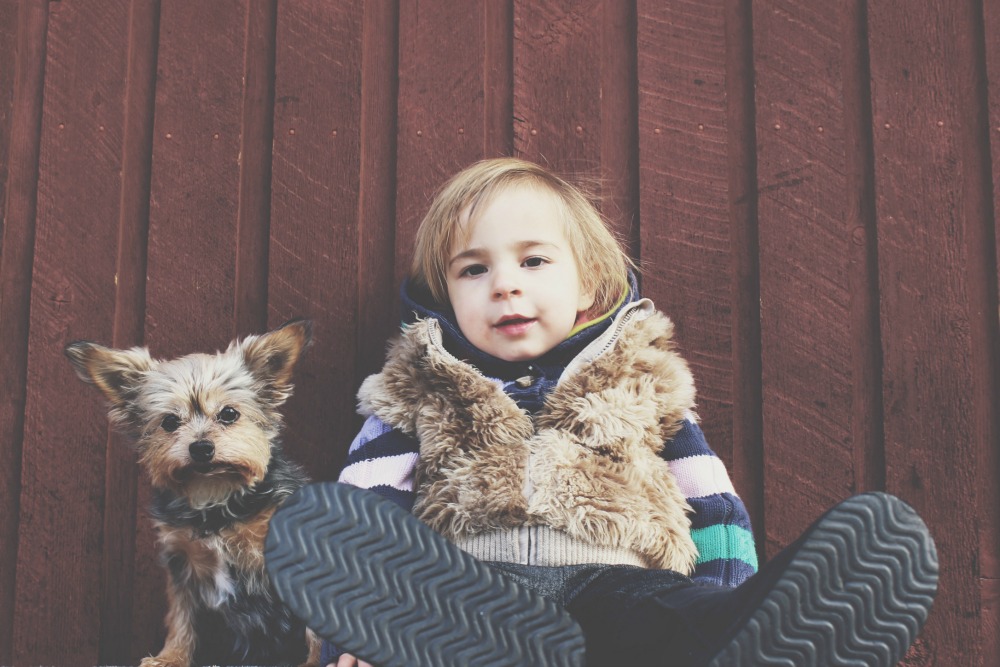I’m often asked by parents how they can help their children to be more resilient and less vulnerable to mental health problems. Although we can’t stop all mental health problems, we can help children and young people to develop habits that build their wellbeing and resilience. But, these habits can’t exist on their own. They need to grow out of strong, supportive, nurturing relationships that children can develop with their parents, caregivers and teachers.
Here are 5 ways for building wellbeing, all of them will be more powerful when done with your child, becoming habits you do together, and integrating them into your everyday lives:
-
Be yourself.
Helping children to recognise their character strengths is a great way to build their confidence and appreciate the uniqueness they bring to the world.
By shifting the focus from the things they can’t do to what they can, you emphasise the positive aspects of their character. Character strengths aren’t dependant on an outcome, a grade or a particular achievement; they’re the core virtues that make us who we are.
There are many ways you can encourage children to notice and appreciate their own strengths, and those of others too. Here are just three:
• Spot strengths
If you’re one of the people spending time wth a child (a parent, friend, teacher, or example), start noticing and naming the strengths you see them display. So, say things like: “You really showed your strength of patience today while we waited at the supermarket” and “I noticed how you were working together in your football practice today; great teamwork!”
• Take the VIA strengths survey
You may want to support children over 10 by getting them to take the Youth VIA strengths online survey (which is free). By answering a series of questions, the child discovers their strongest character strengths. To emphasise their top 5 strengths, write them down and make sure your child can see them every day.
• Find a character role model
There are so many fantastic stories and films depicting character strengths. Talk with your child about the strengths on display and see if they want to try emulating the role model in real life. If they do, use the “spot strengths” technique to praise them for working hard on the trait.
2. Be grateful.
It can be easy to feel other people’s lives are better than our own, especially when we’re bombarded with perfect images on social media. We can get stuck thinking others are more beautiful, have more money and fun, or simply ‘have more’. And children are just as susceptible as adults to this comparison trap. So how can we help them (and ourselves)?
One idea is to bring attention to what’s working well in your/their life by developing gratitude skills. Here are three ways to do this:
• Start a gratitude jar
Get children into the habit of writing a short gratitude note when things have gone well, and putting it into a gratitude jar. You can encourage them by modelling the behaviour and doing it yourself (it may boost your mood too!). To help get you started, there’s a 40 second video on our blog.
• Write a gratitude journal
Older children may prefer to keep a gratitude journal, noting down the things they appreciate and the things that went well for them each day. It can include the positive moments they witnessed too – perhaps good things that happened to their friends that they want to celebrate and give thanks for (learn more about the power of gratitude in this Hey Sigmund post)
• Have a gratitude conversation
Find a time each day to chat about gratitude. Some parents like to do this before their child goes to sleep, prompting them to talk about what’s gone well that day. Some teachers build the chat into the end-of-school routine, by asking questions like ‘Tell me about someone who’s been kind to you today” or “Tell me about something you feel really thankful for today”.
Building gratitude habits doesn’t mean we diminish, or lack a response to, the struggles and difficult moments that children experience. These moments are really important to talk about too. But, having a time in the day when you focus on the positive can be useful in helping children to keep their thoughts balanced.
3. Be mindful.
Our minds can be very busy, getting pulled into thinking about the past or worrying about the future. Finding ways to focus on what’s happening in the present moment is another way to build your child’s wellbeing.
Here are three different ways to help children develop their mindfulness skills, which will probably work best if you join in too (especially if it’s younger children involved).
• Draw for 10 minutes
Give everyone a pencil and paper, set a timer for 10 minutes, and draw something you can see. Bring your attention to the shapes, colours, and patterns. Look at the object from different angles. Challenge older children to see if they can spot when their mind’s wandering (or wondering!) and bring their attention back to the drawing. This activity isn’t about how ‘good’ or ‘bad’ the drawing is, it’s about whether you can focus on the activity and bring your attention back when it wanders.
• Take a bear for a ride
Younger children may enjoy this simple mindfulness technique for bringing attention to their breath. Ask your child to find their favourite small soft toy. Lay flat on the floor and invite them to put the soft toy on their tummy. Set a timer for two minutes, and ask them to watch how the toy moves up and down as they breathe in and out. This simple act of noticing the movement allows your child to remain “in the moment” for more than one moment.
• Train the “puppy mind”
Older children (and adults) might enjoy watching this video from the Mindfulness In Schools Project. It’s a 10-minute mindfulness practice that uses a fun and playful animation.
4. Be kind.
Kindness is a win-win for wellbeing. The research shows us that when we’re kind to others, we not only boost each recipient’s wellbeing; it tends to have the same effect on our own sense of wellness too. Being kind can help us connect with others, and our relationships play a crucial role in our mental health and wellbeing in the long term.
There are hundreds of ways children and adults can show kindness – every day. And it can be fun to sometimes turn these acts into larger events, to really emphasise their importance and value.
• Wear a “kindness cape”
Younger children often love pretending to be superheroes, from SpiderMan to WonderWoman. So they’re also likely to enjoy wearing an imaginary ‘kindness cape’ and working with adults and peers to do superhero acts of kindness. These could be at school, at home or in the community. You can use these opportunities to talk about why it’s important to be kind – to others and to ourselves.
• Give something
Encourage children to consider donating toys or clothes they’ve outgrown to a charity shop. Involve them in the process, right from choosing what to give through to taking it to the shop. Talk to them about how they’re helping others due to the charity’s work, and helping the planet by recycling rather than adding to landfill.
• Start fundraising and volunteering
For older children, connecting kindness to something they’re passionate about can be a great way to get them involved with their community and boost their wellbeing. They can do this through organisations like Step Up To Serve (#iwill), which aim to get young people involved in social action opportunities in the community.
5. Nurture a growth mindset.
Being resilient means bouncing back when you encounter challenges, set backs or failures. We all go through times when we struggle, so building our resilience is crucial to helping us cope.
One way to build resilience in children is to help them develop a growth mindset. This relates to the belief that our abilities and intelligence can develop with practice, feedback and effort. At the other end of the spectrum is a fixed mindset, the belief that our intelligence is fixed and there isn’t much we can do to change it.
Children with a growth mindset are more likely to try again when they fail at something, and also to attempt to learn how they can improve. Research into this ‘gritty’ quality and growth mindset approach shows that learning from failure is one of the crucial tools for success and resilience. In contrast, children with a fixed mindset tend to give up when they encounter failure, believing that that just don’t have what it takes.
Here are three ways to encourage your child to adopt a growth mindset:
• Add the word ‘yet’
Changing the way you talk about intelligence can help your child understand that learning is a process, and that our abilities and traits are not fixed from birth. When your child claims ‘I can’t do this’ (whether they’re talking about a new hobby, their homework, or tying a shoelace), say ‘You can’t do it YET’. Adding this tiny word emphasises the learning process.
• Practise (and fail) with others
Trying new things can be scary, but it’s often less scary when you do it with others. As a family, you might decide to try something new and celebrate your failures when it doesn’t work (the 1st, 2nd, or even 99th time!). Children can learn a lot from hearing adults respond kindly to themselves when things don’t work out – and then from seeing them try again.
• Find inspirational stories of success and failure
With the Winter Olympics in full flow, it’s a great time to have conversations about how these athletes are able to achieve such elite levels of performance. Talent alone doesn’t make you an Olympian. You have to be prepared to dedicate years of training, sacrifice many things, and learn to accept – and grow from – failure to achieve these remarkable accomplishments. These conversations about inspirational people and their achievements can help reinforce the growth mindset message.
Remember that we, as parents, teachers and caregivers are a crucial source of wellbeing for our children. Have fun with these ideas, try out the ones that fit for you and your family, and let go of the ones that don’t. If you try any of these ideas, we’d love to hear how it goes: the successes and the failures!
[irp posts=”1693″ name=”How to Teach Kids About the Brain: Laying Strong Foundations for Emotional Intelligence (by Dr Hazel Harrison)”]
[irp posts=”2566″ name=”How Gratitude Changes the Brain – And How to Make it Work For You (by Dr Hazel Harrison)”]
About the Author: Dr Hazel Harrison
 Dr Hazel Harrison works as a clinical psychologist in the United Kingdom. She founded ThinkAvellana to bring psychology out of the clinic and into everyday life. Her website is www.thinkavellana.com and you can also follow her on Twitter at @thinkavellana and on Facebook at www.facebook.com/thinkavellana
Dr Hazel Harrison works as a clinical psychologist in the United Kingdom. She founded ThinkAvellana to bring psychology out of the clinic and into everyday life. Her website is www.thinkavellana.com and you can also follow her on Twitter at @thinkavellana and on Facebook at www.facebook.com/thinkavellana



Thank you for sharing this article. Not only are there 5 ways to raise a resilient child but specific and fresh ideas within each strategy.
Thank you again, Karen. I will share this article on my social media sites.
Undeniably the best article I’ve ever read about raising children and teaching behaviour. Thank you!!!
The article was great, but there was no way for me to email it to a friend. Could you please add that feature to your site please?
Lela if you copy the link from the search bar at the top, then you can paste it into an email and send it on its way.